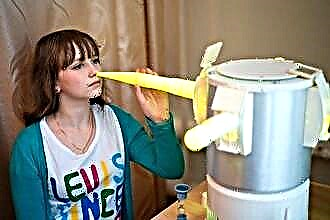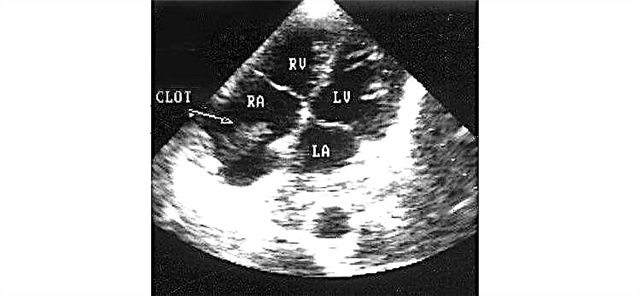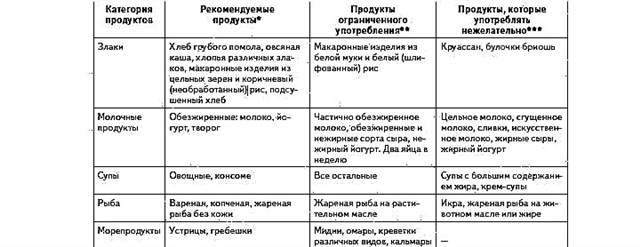When a boil appears in the nose, only a doctor should decide how to treat it. Independent attempts to use folk remedies or get rid of a neoplasm by squeezing out can lead to serious consequences. There are many nuances that specialists take into account when choosing a treatment for a particular patient. Consider the features of this disease and methods for its elimination.
What makes the boil appear
 A furuncle of the nose is a process accompanied by inflammation and the formation of purulent masses. It occurs due to the decomposition of the hair follicles, which can be provoked by various infections. Most often, staphylococci and streptococci lead to the appearance of a violation. They enter the body through the mucous membrane. The following factors can also provoke the disease:
A furuncle of the nose is a process accompanied by inflammation and the formation of purulent masses. It occurs due to the decomposition of the hair follicles, which can be provoked by various infections. Most often, staphylococci and streptococci lead to the appearance of a violation. They enter the body through the mucous membrane. The following factors can also provoke the disease:
- hypothermia of the body;
- drop in immunity;
- non-observance of the rules of personal hygiene (picking the nose with dirty hands, using old or other people's hygiene items, etc.);
- improper treatment of wounds in the nose;
- unsanitary working and living conditions;
- diabetes;
- infection with worms (often found in children);
- violation of metabolic processes in the body, which occur against the background of disorders of the gastrointestinal tract and the endocrine system;
- chronic diseases of the oral cavity and ENT organs;
- systemic furunculosis.
Under normal conditions, the human body can fight bacteria that enter the nasal cavity. But if the immune system fails, and the mucous membrane is damaged, ideal conditions are created for the reproduction of pathogens and their penetration into the hair follicle. As his cells die off, the patient feels increasing pain, even the outer tissues turn red and swell, in some cases there is an increased secretion of mucus from the nose.
Feasibility of treatment
 In no case should you ignore the boil in your nose. It is dangerous not only for health, but also for the patient's life. A high degree of risk is expressed in the fact that the vessels located in the facial skull go directly to the brain. This means that if a purulent abscess opens, bacteria can enter the bloodstream and spread further through the body.
In no case should you ignore the boil in your nose. It is dangerous not only for health, but also for the patient's life. A high degree of risk is expressed in the fact that the vessels located in the facial skull go directly to the brain. This means that if a purulent abscess opens, bacteria can enter the bloodstream and spread further through the body.
Untimely treatment of a boil can lead to such serious consequences:
- the occurrence of blood clots in the blood vessels of the face;
- thrombophlebitis of the lining of the brain;
- infectious lesion of the soft tissues of the brain (encephalitis, meningitis);
- blood poisoning (sepsis).
These disorders lead to serious health problems, ranging from paralysis to death. To avoid such consequences, you need to see a doctor as soon as you find the first signs of a boil: redness, swelling, pain when pressing on soft tissues. Only a doctor can prescribe an effective treatment.
It's important to know! Never try to squeeze a boil in your nose, even if it is small. Incorrect opening of the abscess and incompletely removed purulent masses is a direct path to infection of the blood and brain.
Features of the choice of therapy
 The treatment strategy depends on factors such as the stage of the disease, the characteristics of the patient's body condition and the causative agent of the disorder. The choice of therapy can only be made after an accurate diagnosis has been made. To identify all the features of the pathology, the doctor conducts a clinical study, during which he examines the nose and its inner surface, collects an anamnesis from the patient's words. It is also necessary to study laboratory tests - a smear is taken from the patient from the area of the boil and it is revealed what exactly became the pathogen.
The treatment strategy depends on factors such as the stage of the disease, the characteristics of the patient's body condition and the causative agent of the disorder. The choice of therapy can only be made after an accurate diagnosis has been made. To identify all the features of the pathology, the doctor conducts a clinical study, during which he examines the nose and its inner surface, collects an anamnesis from the patient's words. It is also necessary to study laboratory tests - a smear is taken from the patient from the area of the boil and it is revealed what exactly became the pathogen.
A blood test is needed to rule out sepsis. It is very good if, upon detection of the bacterial nature of the disease, specialists conduct tests showing the reaction of the pathogen to certain types of antibiotics, this will help prescribe the most effective treatment.
If serious complications are observed, then the nervous system is checked for the safety of functions, this is done periodically until the patient is fully recovered.
Local therapy
Local agents are aimed at suppressing the multiplying pathogenic bacteria, alleviating the condition after opening the boil, or relieving severe symptoms before it ripens. They are used either at a certain period of the disease, or at its initial or final stages, the doctor writes the scheme. The most commonly used tools are:
 Boric alcohol. An antiseptic that prevents contamination of nearby healthy tissue. They need to process not the boil itself, but the area around it.
Boric alcohol. An antiseptic that prevents contamination of nearby healthy tissue. They need to process not the boil itself, but the area around it.- "Vishnevsky ointment". It increases the regenerative capacity of tissues and disinfects surfaces. It should be applied to the site of inflammation, but only before the boil matures, after the appearance of pus, the drug is immediately canceled.
- "Mupirocin". An ointment that can be used for the entire period of the disease. The composition includes local antibiotics that suppress the reproduction of pathogenic microorganisms. Apply the product directly to the mucous membrane and boil.
- Saline solution. A 1% salt solution can also be used at any time during the development of an infection. Turundas are dipped into it, which are inserted into the nasal passage so that they come into contact with both the boil and healthy tissues. After opening, it is especially useful to make such applications, since the product literally "draws out" the purulent masses.
For physiotherapy procedures, you need to consult a doctor. In some cases, warming up the nose can only give complications, since under the influence of heat in the mucus, active reproduction of bacteria begins. This can only make the situation worse.
Antibacterial therapy
General therapy is appropriate for a complex course of the disease. It is used mainly before the formation of a boil. Antibiotics suppress the reproduction of pathogenic microflora, kill it and prevent it from spreading to healthy tissues. The drugs are used intravenously or intramuscularly, only in milder forms tablets are shown. In modern medicine, the following means are used:
 Vancomycin. The drug is available in the form of tablets and intramuscular injections. Acts only on the coccal flora, in relation to microbacteria is not effective. The mechanism of suppressing the activity of pathogenic microorganisms lies in the fact that the agent disrupts the work of their genome, integrating into the cell membranes and forming holes in them.
Vancomycin. The drug is available in the form of tablets and intramuscular injections. Acts only on the coccal flora, in relation to microbacteria is not effective. The mechanism of suppressing the activity of pathogenic microorganisms lies in the fact that the agent disrupts the work of their genome, integrating into the cell membranes and forming holes in them.- "Cefazolin". It is prescribed intramuscularly or orally. It is considered a broad-spectrum agent, but in relation to some coccal microorganisms it is ineffective, since they have developed immunity to it.
- "Tetracycline". A broad-spectrum antibiotic that has a detrimental effect on almost all pathogens, however, there are staphylococci that have developed high resistance to it. The disadvantages of the drug include a large number of side effects.
Immunotrepia
Strengthening local and general immunity is necessary in case of recurrence of boils. To maintain the body in good shape will help drugs that activate protective functions, accelerate regenerative processes in tissues.
Sometimes immunomodulators have not only supportive, but also anti-inflammatory effects. The most commonly used products are Galavit, Likopid, Polioksidony.
Surgical dissection
When an abscess has already formed in the nose, only the doctor decides what to do with it.The use of medications in this case will not give a positive result, therefore it is necessary to open the abscess. The patient is admitted to a hospital, an operation is performed under local anesthesia or general anesthesia.
The doctor cuts the surface of the boil with a scalpel, the edges of the cavity are expanded with a special clamp. Purulent masses are removed, after which the wound is treated with a disinfecting solution. Sometimes it is necessary to insert a drain that allows the pus and blood to drain out. After the operation, bed rest is shown, sometimes a hospital stay is required.
Traditional methods
All folk remedies should be used only after consulting a doctor. Some treatments can increase or decrease the effects of prescribed drugs. It is also worth remembering that they contribute to the early maturation of the abscess.
You can use the following treatment methods at home:
 Soap and honey compress. It is recommended to use tar soap, it has high disinfecting properties. The soap is rubbed onto the finest grater, liquid honey and flour are added to it. The dough should not turn out too dense and elastic; turundas are formed from it, which are inserted into the nostril at night.
Soap and honey compress. It is recommended to use tar soap, it has high disinfecting properties. The soap is rubbed onto the finest grater, liquid honey and flour are added to it. The dough should not turn out too dense and elastic; turundas are formed from it, which are inserted into the nostril at night.- Chamomile compress. Chamomile flowers relieve inflammation well. To prepare a compress, you need to take 2 tablespoons of dried raw materials and pour them with a glass of boiling water. Do not cover the mixture with a lid so that it “breathes”, and let it brew for 2 hours. After that, we moisten gauze tampons in liquid, squeeze them slightly and insert them into the sore nostril.
Preventive measures
It is very simple to avoid the appearance of a boil. To do this, you need to carefully monitor your health and the conditions in which you work and live. Unsanitary conditions are one of the main "provocateurs" of bacterial infections. You should also follow these simple rules:
- treat ENT diseases on time and to the end;
- observe the rules of personal hygiene;
- improve local and general immunity;
- avoid chemical, thermal and mechanical irritants of the nasal mucosa.
In conclusion
Only a doctor can prescribe an effective treatment for a boil in the nose. The disease has its own specifics, therefore it requires a careful approach to the selection of therapy. It is necessary to strictly follow all the doctor's recommendations in order to recover as quickly as possible. If you have a predisposition to this disorder, you should seek medical help at the first symptoms of a boil.

 Boric alcohol. An antiseptic that prevents contamination of nearby healthy tissue. They need to process not the boil itself, but the area around it.
Boric alcohol. An antiseptic that prevents contamination of nearby healthy tissue. They need to process not the boil itself, but the area around it. Vancomycin. The drug is available in the form of tablets and intramuscular injections. Acts only on the coccal flora, in relation to microbacteria is not effective. The mechanism of suppressing the activity of pathogenic microorganisms lies in the fact that the agent disrupts the work of their genome, integrating into the cell membranes and forming holes in them.
Vancomycin. The drug is available in the form of tablets and intramuscular injections. Acts only on the coccal flora, in relation to microbacteria is not effective. The mechanism of suppressing the activity of pathogenic microorganisms lies in the fact that the agent disrupts the work of their genome, integrating into the cell membranes and forming holes in them. Soap and honey compress. It is recommended to use tar soap, it has high disinfecting properties. The soap is rubbed onto the finest grater, liquid honey and flour are added to it. The dough should not turn out too dense and elastic; turundas are formed from it, which are inserted into the nostril at night.
Soap and honey compress. It is recommended to use tar soap, it has high disinfecting properties. The soap is rubbed onto the finest grater, liquid honey and flour are added to it. The dough should not turn out too dense and elastic; turundas are formed from it, which are inserted into the nostril at night.

